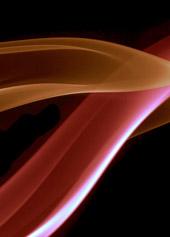 Add My Company
Add My Company
Sign In

Conventional compressor air-conditioning chillers are powered by electricity. Absorption chillers/heaters, on the other hand, use high-temperature heat as their main energy source.
A very small amount of electricity is needed in absorption systems compared with compression cycle systems, because only the pumps are operated by electricity. However, the investment cost of the system is much higher than for a compressor system. Absorption chillers are therefore used mostly for large installations when electricity is limited and/or heat is abundant.
Absorption chillers can be used for both heating and cooling purposes simultaneously, by using the process cooling water from the absorber and the condenser.
The most efficient modern absorption cycle chillers use water as the refrigerant and a solution of lithium bromide (LiBr) as the absorbent. The LiBr concentration is typically around 64% after the generator and approximately 60% after the absorber.
The simplest absorption system is a one-stage system with one absorber and one generator. The benefits include lower investment costs, but the trade-off is the lower efficiency. The use of multistage absorbers or generators increases the system performance, but also the investment cost. An absorption chiller system is shown in Figure 10.20.
CBEs are used to exchange heat between different flows in the system. Typical applications include heat exchange in the circulating stream between the hot LiBr stream from the generator and the low-temperature stream from the absorber. This heat exchanger is often referred to as "high-temperature". Other BPHEs can be used to cool further the LiBr stream entering the absorber, "low-temperature", and another to preheat further the stream entering the generator.
Due to the true counter-current flow and highly efficient heat transfer surface in a BPHE, the temperature driving force of heat exchange can be kept at a minimum, which is important for the system performance. The efficiency of BPHEs is also less sensitive to the low flow velocities than that of Shell and Tube (S&T) heat exchangers.
Lithium bromide in concentrations used currently (60-65%) is potentially very corrosive to stainless steel (AISI 316) and copper. The risk of corrosion also increases strongly with temperature. However, with added corrosion inhibitors (molybdates), empirical experience from customer installations shows that the copper-brazed BPHE technology can withstand corrosion provided no air (oxygen) enters the system and the temperature stays below ~110°C. Some as yet unconfirmed field results also suggest that this temperature limit may be higher.
A nitrogen blanket before charging the system, and vacuum purge during operation, are required to ensure that there is no air contact. Because the system operates below atmospheric pressure, it is also imperative that the system be as well-sealed as possible.
For more information on Absorption Chillers talk to Swep International
Enquire Now
List your company on FindTheNeedle.

